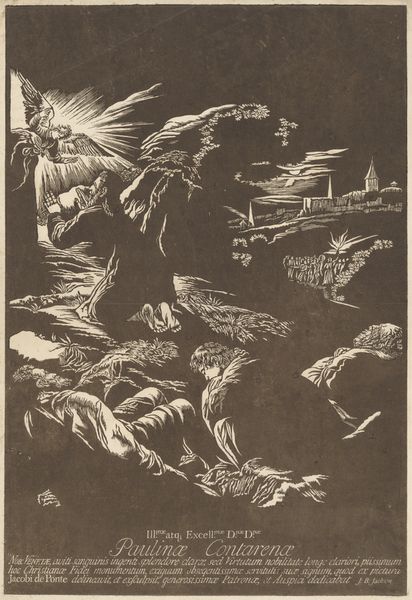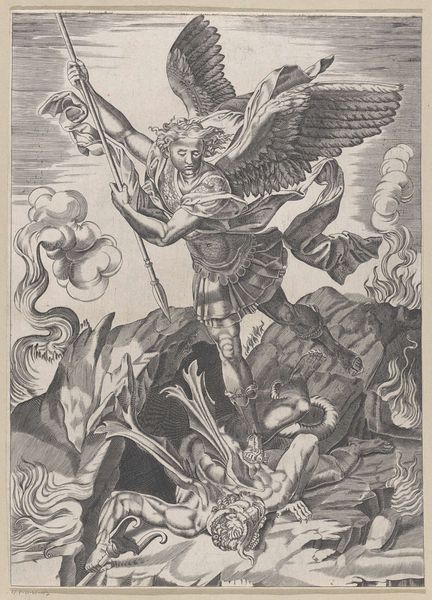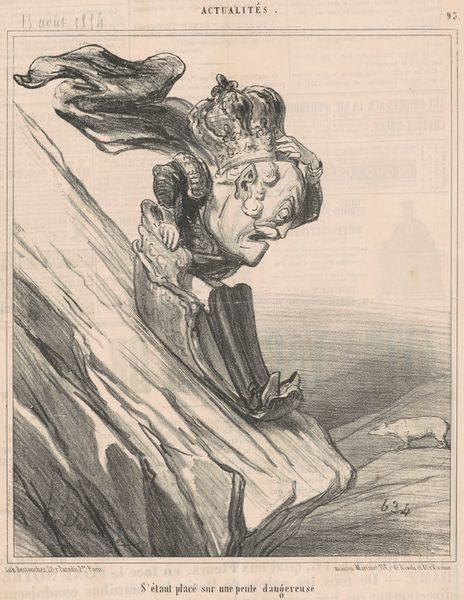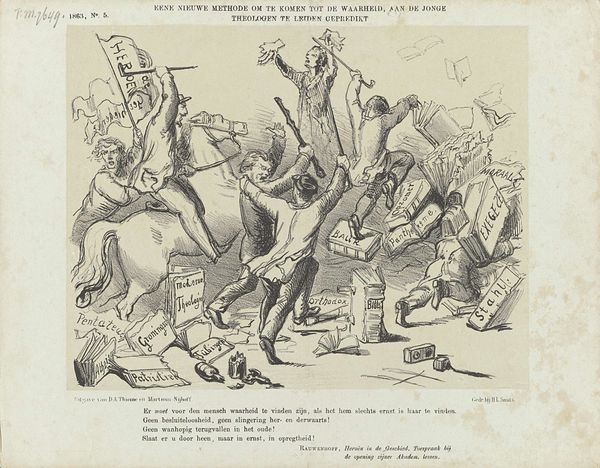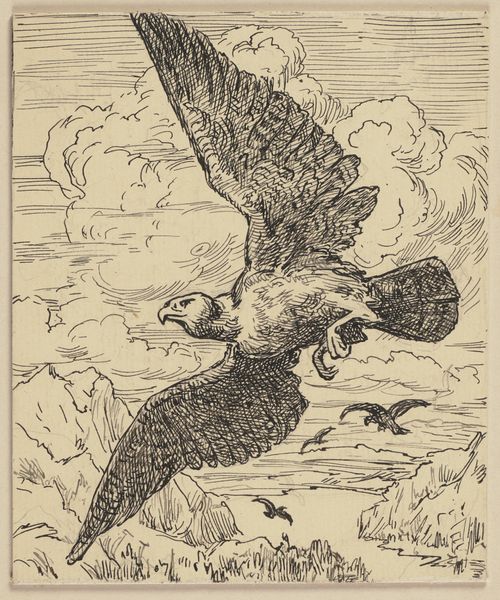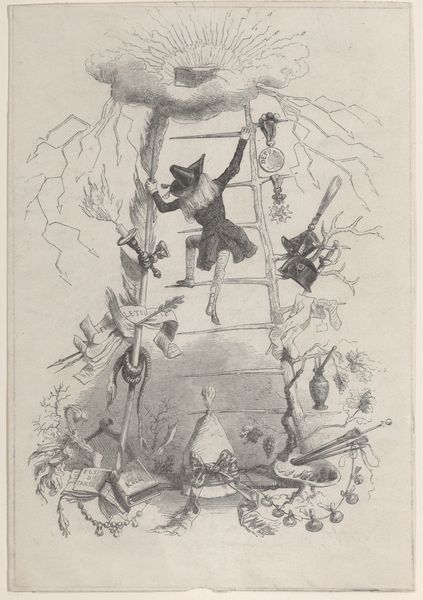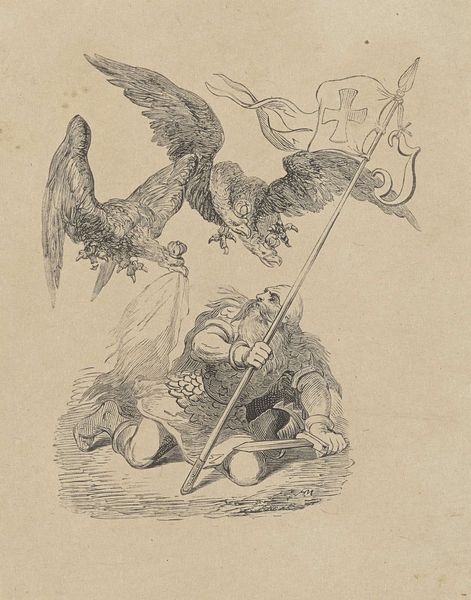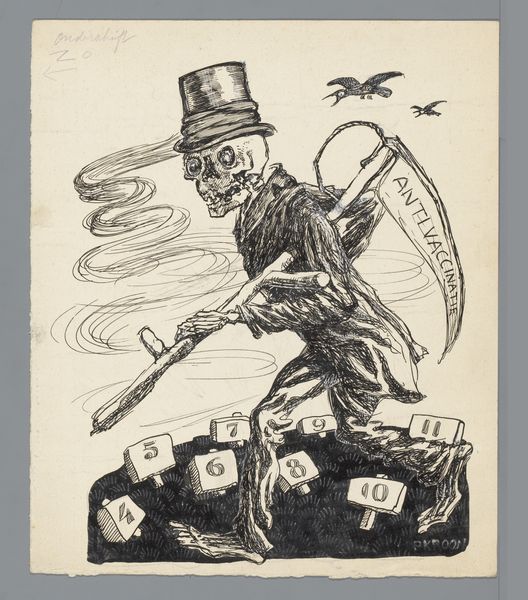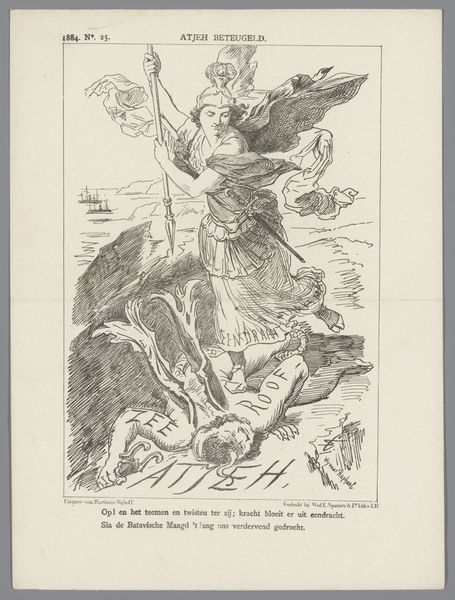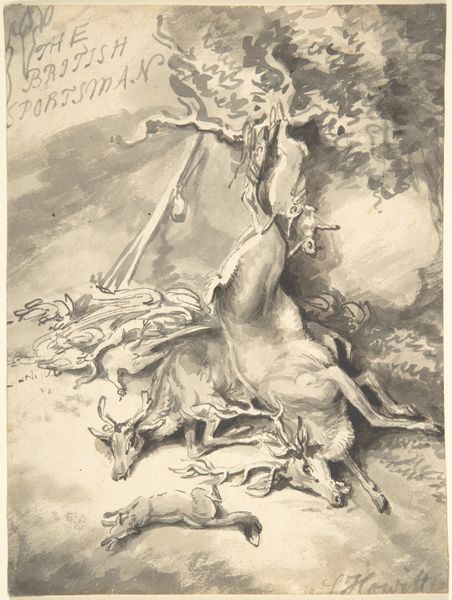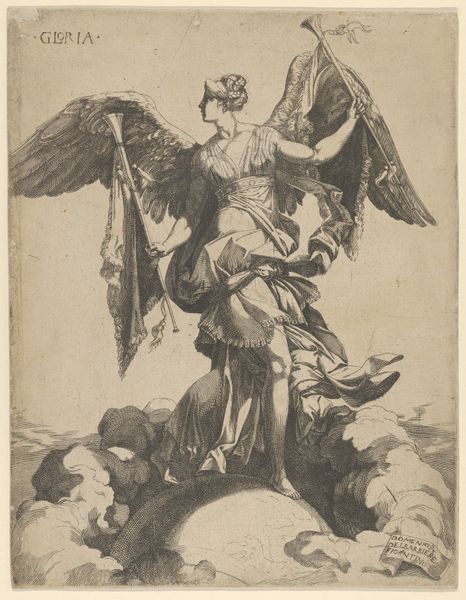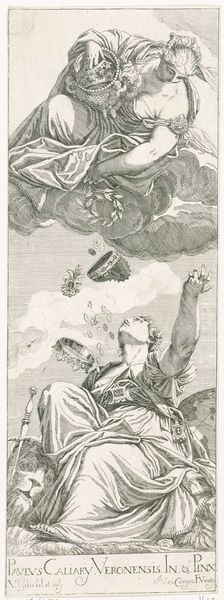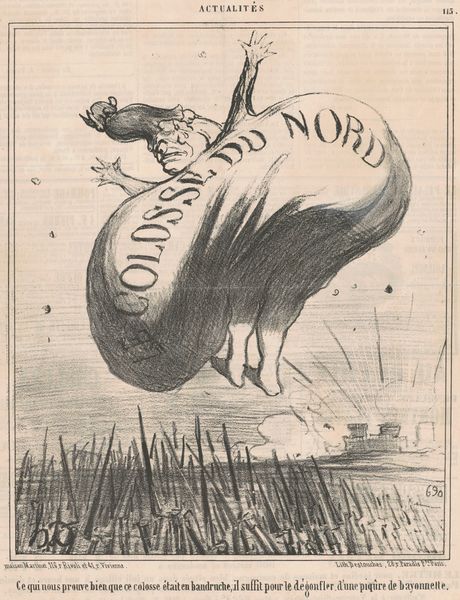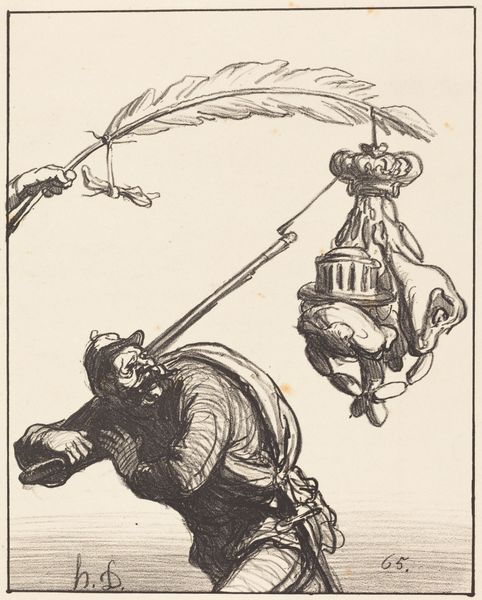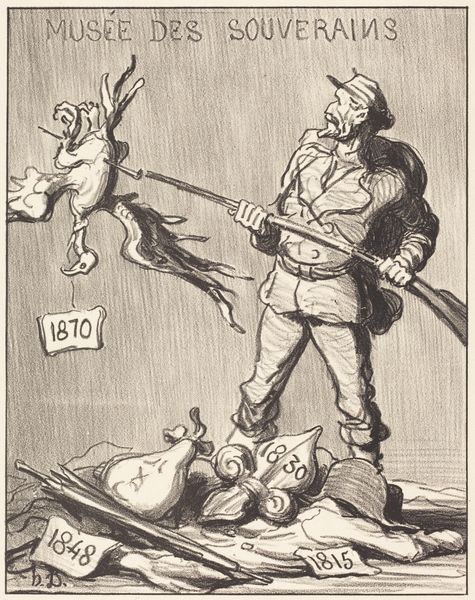
drawing, graphic-art, lithograph, print
#
drawing
#
graphic-art
#
lithograph
# print
#
fantasy illustration
#
caricature
#
coloured pencil
#
history-painting
Dimensions: 239 × 222 mm
Copyright: Public Domain
Editor: Here we have "The Phoenix, from Puck," a lithograph by Joseph Keppler from 1890. It's a rather striking image. What exactly is it saying? Curator: This piece uses caricature to explore power dynamics and potential for transformation within late 19th-century American society. What do you see in the imagery that speaks to that potential? Editor: Well, I see the figure rising from flames, so that alludes to renewal, but...who is he and what is he leaving behind? Curator: Precisely. Consider Puck magazine's role as a satirical voice during a time of rapid industrialization and political upheaval. Notice how the rising figure—clearly a man of stature based on his clothing and facial features—is depicted as a phoenix, but with distinctly human characteristics. What commentary might Keppler be making about those in power, and what system do they embody as he arises from the 'ashes' of those below him? Editor: It looks like he’s stepping on other bodies as he rises up. It feels critical, like it's a statement about the cost of progress. Maybe he's critiquing the elite of the time, suggesting their rise is built upon the destruction of others. Curator: Exactly! Now, how does understanding the sociopolitical climate of the Gilded Age inform our interpretation? Editor: So, it’s less about literal death and rebirth and more about socio-economic structures, who benefits from them and how others get left behind… That's a really sharp commentary. I hadn't thought about it that way initially. Curator: It shows how art engages in conversations around identity, gender, race, and politics, revealing their intersections with historical narratives. There is often more to political cartoons than initially meets the eye!
Comments
No comments
Be the first to comment and join the conversation on the ultimate creative platform.
